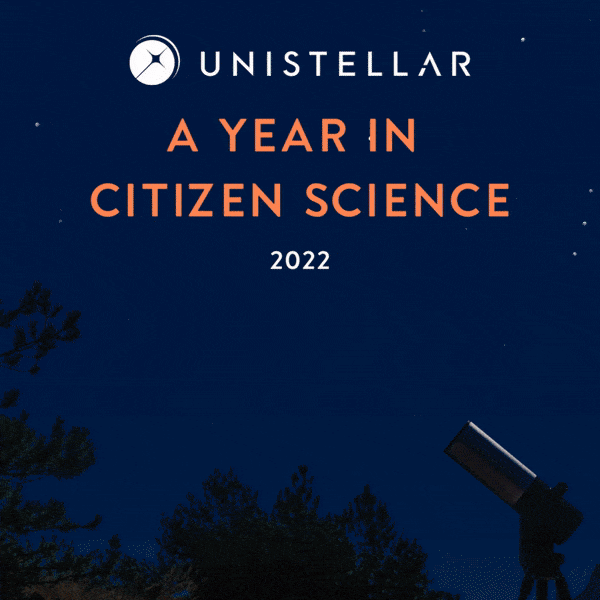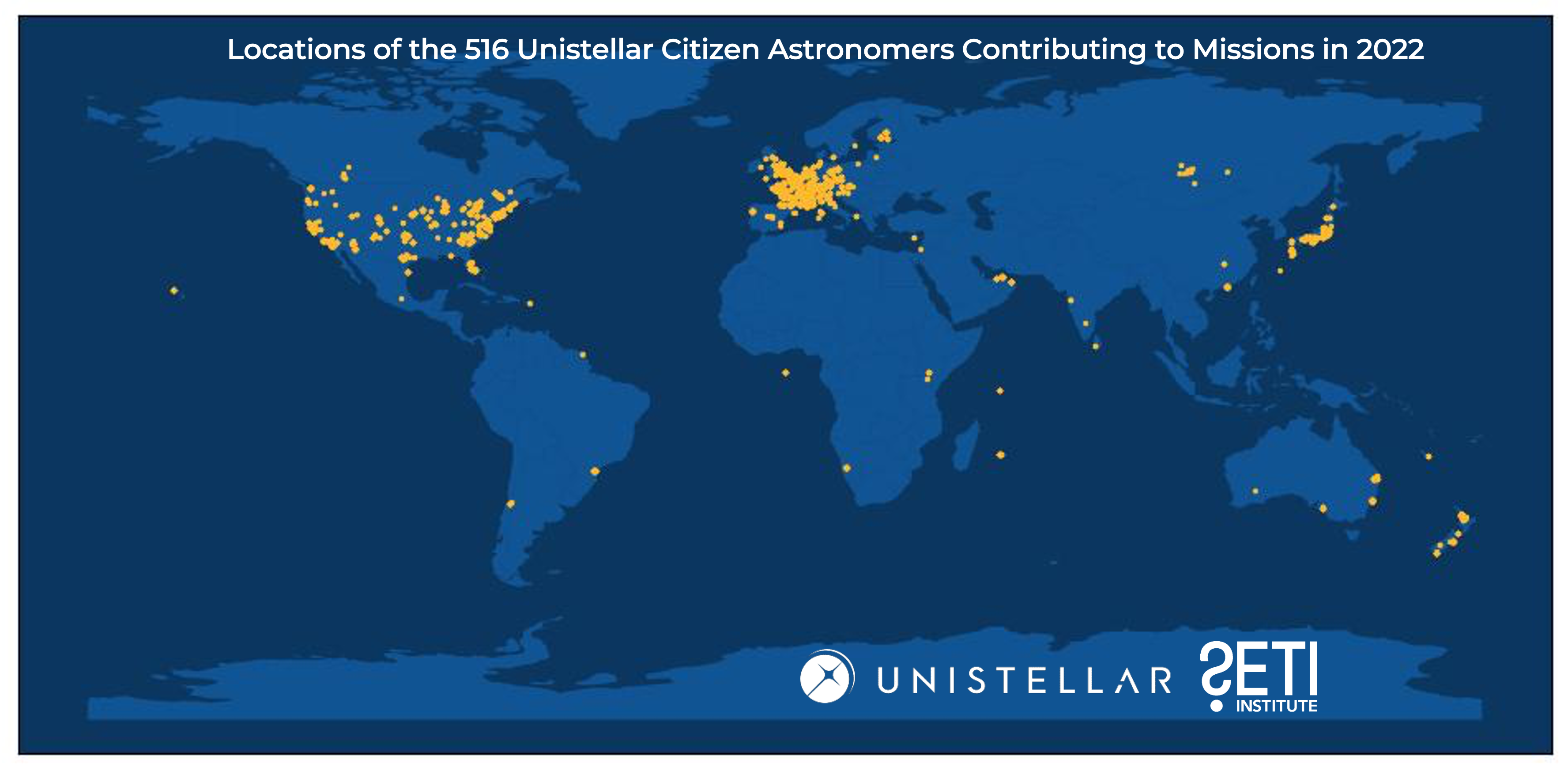
In 2022, the network of SETI Institute/Unistellar observers utilized Unistellar telescopes to conduct more than 4,000 scientific observations, a significant rise from the previous year's 1,100. This active participation in astronomical research resulted in breaking world records and providing crucial data to the scientific community. From planetary defense to exoplanets, citizen scientists in this global community are contributing to numerous fields of astronomical research.

In one of the most exciting moments of 2022, SETI Institute/Unistellar Network members observed the target of NASA’s Double Asteroid Redirection Test (DART) mission before, during, and after it smashed into an asteroid. Their data shaped a publication in Nature, led by SETI Institute scientists and co-authored by citizen astronomers. It confirmed the effectiveness of the DART spacecraft’s impact and provided important information about the ejecta jettisoned from the asteroid after the collision.
DART was NASA’s flagship planetary defense mission, but it was not the only way citizen astronomers contributed to the planetary defense field. In 2022, they took nearly 550 scientific observations on 32 different asteroids. The SETI Institute/Unistellar Network submitted these data to the Minor Planet Center, which qualified them as the citizen science group making the most contributions to this official data repository. By keeping an eye on Near-Earth asteroids and gathering crucial data on DART, citizen astronomers made a significant impact in planetary defense last year.
Speaking of spacecraft, DART was not the only mission observed by citizen scientists in 2022. After its launch on December 25, 2021, SETI Institute/Unistellar observers became the only group to take scientific observations of the James Webb Space Telescope (JWST) from the ground to its final space destination at the second Lagrange point. These data, which captured important milestones in JWST’s beginnings, were again published with citizen astronomers listed as co-authors.

Zooming out beyond the influence of our solar system, citizen astronomers turned their telescopes towards distant stars to watch for transiting exoplanets. As part of the SETI Institute and Unistellar’s NASA partnership, observers participated in five NASA-sponsored exoplanet transit searches. Citizen astronomers caught the transit in three of the campaigns; even when they didn't detect a transit, the data will help narrow down the target exoplanet’s orbital period. And as far as orbital periods go, SETI Institute/Unistellar Network members were also published in the Astrophysical Journal Letters last year for observing a 16-hour transit by Kepler-167e, the longest-period exoplanet ever observed from the ground, thanks to the Network’s dedication.
The evidence is clear - the SETI Institute/Unistellar Network members are revolutionizing the way science is conducted, expanding the boundaries for both their communities and professional astronomers. With a larger number of participants in 2022 than ever before, citizen astronomers are collaborating towards an even more extraordinary 2023.





